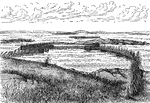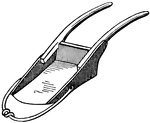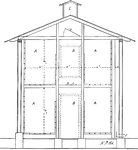
Gill-net
A net that catches fish with gill covers in the mesh of the net. This illustration shows a gill-net…

Herring Weir
A fixed trap that fish can easily find their way into, but cannot easily find their way out. This particular…

Oxen Team Plowing
A team of two oxen pull a plough across a field. Trees and a fence frame the field.

A Roman Farmer with a Plow
Illustration of a Roman farmer driving his plow, called an aratrum. The man wears a typical brimmed…

Peasants Using Mallets to Break Clods of Earth Before Farming the Land
Two medieval peasants, a man and woman, break clods of earth apart with mallets. The man is swinging…

Harrowing a Field for Farming in the Middle Ages
Two young men prepare the field using a simple harrow pulled by a horse. One man follows behind the…

Reaping Grain the 14th Century
Men and women reap the grain from a field in the 14th century. Two women are bent over using sickles…

Threshing Wheat with Flails in the 14th Century
Two men thresh a sheaf of wheat using flails. The flails appear to be made from two sticks joined together…

Scraper, Meant to be Drawn by Oxen or Horses
"An apparatus drawn by oxen or horses, and used for scraping the earth in making or repairing roads,…

